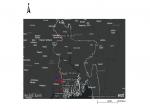Almost exactly ten years after the end of the decades-long civil war in Sri Lanka, a horrendous wave of jihadi terrorism has made a terrifying re-entry. Eight near simultaneous bomb blasts were carried out across the country in Colombo, Negombo, Kochchikade and Batticaloa. Most of the bombings appear to have been carried out using suicide vests and shrapnel. The terrorists chose as their targets, churches and hotels frequented by foreigners. The explosive devices were also found near Colombo’s international airport and in other areas, but they did not detonate. The latest figures of the death toll reported are 325 including 31 foreign nationals.
The preliminary findings of Sri Lankan police suggest that the horrendous act was planned and executed by a local Islamist extremist group National Thowheed Jamaat (National Monotheistic Organization) or NTJ to seek revenge for attacks on two mosques in New Zealand last month. The magnitude and intensity of the brutal terrorist attack was not witnessed even in the deadliest of suicide bombings carried out by Tamil Tigers. Police have apprehended nearly 40 local individuals allegedly connected with the Thowheed Jamaat. However, the organization has not formally claimed responsibility for the attacks. Interestingly, 48 hours after the attacks the Islamic State (IS) has claimed responsibility, through their news agency Amaq, for the murderous attacks. However, they have not offered any credible evidence for their involvement in the attack.
The NTJ is a local Wahhabi extremist group that splintered from another hardline Islamist group Sri Lanka Thowheed Jamaat (SLTJ) in 2014. The NTJ and SLTJ are different splinter groups of Thowheed Jamaat of Sri Lanka which allegedly originated from the Thowheed Jamaat of Tamil Nadu, believing in radical Wahhabi Islam and Jihad. NTJ has found traction in country’s eastern province and has been pursuing a vigorous campaign to introduce Sharia law with burqas for women and constructing mosques for spreading its radical ideology (ToI, April 22, 2019). NTJ’s extremist ideology and hateful rhetoric led to a backlash from the Buddhist majority which resulted in Buddhist-Muslims riots last year in April.
Further, the group was also involved in the vandalization of Buddhist statues, last year (ToI, April 23). NTJ’s chief Muhammad Zaharan Hashmi came into prominence in 2013 for his incendiary speeches on social media (Khaleej Times, April 23). In many write-ups on the issue being discussed, one come across a tendency to underplay NTJ as a local and remote group incapable of spearheading such well-planned and organized attacks. Whether NTJ single-handedly conducted such an operation or not, still awaits complete and detailed investigation. However, the group is not as naïve and unsophisticated as several commentators are projecting it to be. As Sri Lanka started undergoing jihadi radicalization activities since 2007, this group too came to notice as an active participant right from the beginning. Earlier also there were complaints made about its activities. However, they went unheard. Anne Speckhard, Director of the International Center for Violent Extremism, told the Khaleej Times that a Sri Lankan intelligence official had expressed his apprehensions about the activities of NTJ in Feb. this year at a conference (Khaleej Times, April 23). According to Anne, the intelligence official was worried about the fact that whenever the agencies attempted to act against the group, it met with opposition. This proves without any doubt that the group has been quite successfully carrying out its radicalization programme and extremist activities and had proved elusive to law-enforcement agencies.
Further, there are robust claims of strong linkages between the Islamic extremist groups of Sri Lanka and the Inter-Services Intelligence (ISI). Vicky Nanjappa of India’s online media platform ‘One India’, and a keen observer of South Asia’s terrorism-scene, has written several reports on the activities of ISI to establish a strong base in Sri Lanka, through Islamic extremist organizations with a view to destabilizing Southern India. DNA India has also reported that ISI has been involved in funding NTJ and using Idara Khidmat-e-Khalq as a proxy to radicalize unemployed youth in Sri Lanka and motivate them to join NTJ (DNA India, April 23).
A former ISI chief, when posted in the Pakistani High Commission in Colombo, used to encourage and facilitate many Sri Lankan students to study in Pakistani madrasas. Indian agencies had arrested Sri Lankan national Muhammad Zakir Hussain in 2014 who revealed that apart from running a counterfeit currency racket, he was also part of ISI’s conspiracy to attack consulates. He revealed that his handler was Amir Zubair Siddiqui, a diplomat in the Pak High Commission in India (The Hindu, August 2014). Hence, the Sri Lankan extremist groups like NTJ or SLTJ are neither purely local nor amateur.
Adding a new twist to the story now, the IS has claimed ownership of the serial bombing. However, the claim of IS cannot be accepted on its face value for multiple reasons. Firstly, the organization has suffered major all-round reverses in the Middle East/West Asia. Territorially, the caliphate is almost extinct. Under such circumstances, it appears quite likely that to sustain and strengthen its image of an inspiring power to be reckoned with, IS may claim responsibilities for disconnected and random local attacks by Islamist extremist groups around the world. Secondly, there was no official pledge of allegiance to IS by the NTJ or the perpetrators before the attack.
However, there also are some equally persuasive reasons in favour of involvement of a major transnational terror group like Al Qaeda or IS. Firstly, the scale, intensity, sophistication, operational planning and the logistics of the simultaneous bomb explosions suggest that this may not be the exclusive handiwork of a low-level local outfit without any support from trans-national terror groups. Secondly, in a country where there is a history of bitter Buddhist-Muslim strife, the local group would have preferred to target the Buddhists. However, the targets as indeed the occasion (Easter Sunday prayer) were decidedly the Christians and foreigners. Such a choice gives a message in no uncertain terms that the perpetrators’ motivations were likely to be more aligned with the global Islamist movement rather than local rivalries. Thirdly, the attacks, in their execution, appear similar to the Holey Artisan Bakery suicide attack in Dhaka in 2016, which was carried out by local boys but trained by IS. The attacks bear the clear signature of IS.
Scott Stewart, counter-terrorism expert of STRATFOR, offers a much more rational explanation of the attacks. He suggests that the perpetrators of the attack were not amateurs. There is a strong likelihood of their receiving logistical support, training and ideological motivation from the Sri Lankan foreign fighters who returned from Syria and Iraq. In view of the arguments for and against, it is too early to make firm conclusions about the perpetrators and the other details of the attacks. Further investigations by specialized counter-terrorism agencies will enlighten us more about the attacks.
The range of explanations offered to explore the perpetrators behind the Sri Lankan attacks indicates an emerging trend, i.e. the vanishing of the distinction between the local and the transnational. Here, one would like to argue that the practice of looking at local jihadi extremist organizations purely from the prism of their geographical location reflects a flawed understanding of such organizations.
In a multitude of interactions with the cadres of Islamist organizations and the sympathetic followers, it is understood that they define their Islamic identity as a part of the global Islamist movement. They believe in the concepts of political Islam and Ummah and, hence national boundaries are irrelevant for the ardent followers of such extremist schools. The role and the emotional appeal of the ideology of jihad and caliphate are powerful in these organizations and their cadres. It is also evident in the case of the Sri Lankan attack, as already mentioned above, that the preliminary findings indicate the motive of seeking revenge for the attacks on churches in the far-off New Zealand. Earlier also, as we all witnessed, the Danish cartoons on the Prophet led to protests all over the world. Hence, the ideology of global/pan Islamism transcends national and local boundaries. The main reference point is Ummat, not a nation or a region.
Also, jihadi radical organizations – be it the local one like Thowheed Jamaat or transnational ones like Al Qaeda and IS, with the advances in social media and internet they have become strongly interconnected. The activities of Daesh and Al Qaeda in the Middle East or North Africa have significant impact in motivating and inspiring the jihadis located in faraway territories. Social Media groups and new communication technologies have emerged as the most advanced and effective form of organizational structures facilitating jihadi organizations and their activities in the remotest corners of the world.
From the analysis above, it also emerges that the long-drawn process of religious radicalization plays a pernicious role in abetting jihadist violence. As observed above in the commentary that Thowheed Jammat was carrying its radicalization activities in Sri Lanka for more than a decade now. Earlier in the Barcelona blasts also it was revealed that Catalonia in Spain was undergoing intense Wahhabi radicalization for over two decades. Hence, the so-called non-violent extremist organizations lay the groundwork for the flourishing of violent extremists.
Most of the non-violent Islamist organizations have been fooling the democratic governments that they have nothing to do with violence and politics, and they are solely dedicated to charity and religious preaching peacefully. Any curb on them is condemned as an attack on human rights and freedom of expression. Democracies are vulnerable to such attacks. However, democratic societies and governments must find out ways to deal with non-violent jihadi groups who have no faith in the basic idea of democracy and secularism - if they want the democratic values to survive in their territorial jurisdictions.
Image Source: https://cdn-30-skcir4i63ajp.netdna-ssl.com/wp-content/uploads/2019/04/WhatsApp-Image-2019-04-23-at-6.44.11-PM.jpeg











Post new comment